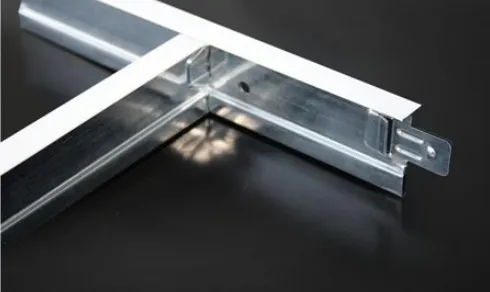Dec . 18, 2024 03:45 Back to list
Ceiling Access Panel Cover Solutions for Easy Maintenance and Inspections
Understanding Ceiling Access Panel Covers A Comprehensive Guide
In the realm of construction and maintenance, ceiling access panel covers play a crucial role that often goes unnoticed. These specialized panels provide access to essential systems hidden above the ceiling, such as plumbing, electrical wiring, HVAC ducts, and other utility lines. By understanding the purpose, materials, installation process, and benefits of ceiling access panels, homeowners and building managers can make informed decisions about their use in both new construction and renovation projects.
What Are Ceiling Access Panel Covers?
Ceiling access panel covers are removable panels installed in ceilings to provide easy accessibility to spaces that may require regular maintenance or inspection. They are typically located in utility spaces like laundry rooms, bathrooms, or any area where overhead utilities might need to be accessed. Although they are functional, they can also be designed to blend seamlessly with the surrounding ceiling or painted to match the decor, ensuring aesthetic appeal is maintained while facilitating practical access.
Materials Used
Ceiling access panels are constructed from various materials, each selected based on the intended application. Some of the most common materials include
- Plastic Lightweight and resistant to corrosion, plastic access panels are a popular choice for moist environments. They are easy to install and generally less expensive than other materials. - Metal Metal panels, usually made from steel or aluminum, are durable and can provide a higher weight capacity. They are ideal for high-traffic areas or where extra strength is necessary.
- Gypsum Board For ceilings that require a fire-resistant option, gypsum board panels can be used. These are more integrated into the overall ceiling construction, giving a clean finish while still allowing access when necessary.
- Wood In cases where aesthetics matter, wooden panels can be custom-made to match the surrounding decor. They provide both style and functionality, though they may not be as common due to cost and maintenance considerations.
Installation Process
Installing a ceiling access panel generally requires a few straightforward steps. Here’s a brief overview
1. Location Selection Choose a location that provides easy access to the utilities needing maintenance while avoiding interference with other installations like lighting fixtures.
ceiling access panel cover

2. Cutting an Opening Use a drywall saw to cut a neatly measured opening in the ceiling. Care should be taken to avoid existing pipes, wires, or ductwork.
3. Frame Installation Most panels require a supporting frame for proper installation. This could come pre-fabricated with the panel or be built using timber or metal studs.
4. Panel Placement The panel is then secured into the opening, ensuring it is flush with the surrounding ceiling. Fasteners might be used for metal panels, while plastic and drywall often use clip-on systems.
5. Finishing Touches After installation, the access panel can be painted or finished to match the ceiling, ensuring a clean and appealing look.
Benefits of Ceiling Access Panels
The incorporation of ceiling access panels into building design offers several essential benefits
- Ease of Access These panels provide quick access to critical systems without compromising building integrity. This means less time and labor costs when maintenance is needed.
- Safety With designated access points, there’s a reduced risk of damaging electrical or plumbing systems during repairs or inspections.
- Aesthetic Appeal Well-designed access panels can blend into the ceiling, minimizing disruption to the overall decor and maintaining the appearance of a finished space.
- Regulatory Compliance In many commercial settings, access panels are a requirement for code compliance, ensuring that necessary systems can be maintained without violating safety standards.
Conclusion
Ceiling access panel covers are a vital component in modern construction and renovation projects. By addressing both functionality and aesthetics, these panels allow for efficient maintenance of essential systems while maintaining the appearance of a well-finished space. Whether you are a homeowner considering renovations or a contractor involved in new builds, understanding the importance of ceiling access panels can help you make the best choices for your projects. Remember that the right panel, materials, and installation methods can significantly enhance both the convenience and safety of your living or working environment.
-
Quality Ceiling Trap Doors & Access Panels | Easy & Secure AccessNewsAug.30,2025
-
Durable Ceiling T Grid Systems | Easy InstallationNewsAug.29,2025
-
PVC Gypsum Ceiling: Durable, Laminated Tiles for Modern SpacesNewsAug.28,2025
-
Pvc Gypsum Ceiling Is DurableNewsAug.21,2025
-
Mineral Fiber Board Is DurableNewsAug.21,2025
-
Ceiling Tile Clip Reusable DesignNewsAug.21,2025







